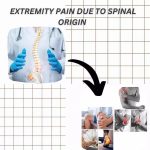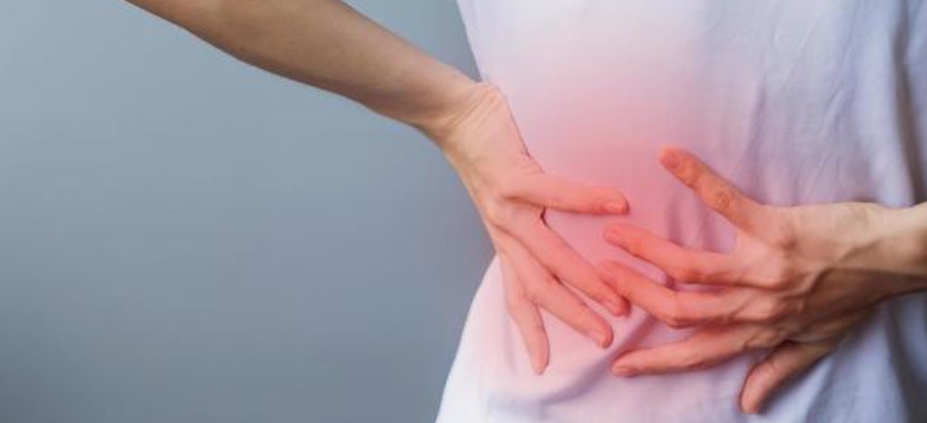This blog summarise the most recent evidence on the association between several MRI picture characteristics and low back pain (LBP).
Recent data on the use of MRI in spine physical therapy is based on a study done by JW van der Graaf et al, 2023:
In an MRI, there are a variety of different characteristics that could be related to LBP. In contrast, a number of aetiologies are related to spinal degeneration but do not really result in the pain that is felt.
Five groups of potential LBP causes and accompanying visual aspects can be identified:
- Discogenic
- Neuropathic
- Osseous
- Facetogenic
- Paraspinal
Ten features demonstrated a favourable association:
- Modic changes in general [67%], & Modic changes type I [100%].
- Disc narrowing [67%].
- Endplate defects [67%].
- Pfrrmann grade [67%].
- Disc herniation [100%].
- Disc extrusion [100%].
- Ligamentum favum hypertrophy [100%].
- Central spinal canal stenosis [70%].
- Nerve compression [100%].
- Muscle fat infltration [67%].
Two features showed mixed results:
- Spondylolisthesis [40%].
- Paraspinal muscle cross-sectional area [50%].
Seven features had no relationship to LBP:
- Modic changes type II [33%].
- Modic changes type III [0%].
- Disc bulging [0%].
- High intensity zone [31%].
- Disc protrusion [0%].
- Foramen stenosis [33%].
- Facet fuid sign [25%].
Eight features had circumstantial evidence :
There was inadequate support for these characteristics. These traits included:
- Black discs.
- Synovial cysts.
- Epidural fat.
- Facet tropism.
- Facet arthrosis.
- Facet hypertrophy.
- Osteomyelitis.
- Vertebral body infarction.
In summary, the following characteristics are strongly linked to LBP, and knowing them will help with clinical judgement and radiological reporting:
- type 1 modic changes.
- disc degeneration.
- endplate defects
- disc herniation
- spinal canal stenosis.
- nerve compression
- muscle fat infltration.
Let’s look at some new information on MRI-based low back pain prediction:
It may be possible to identify subgroups with various natural courses and to control the effects of particular treatments by having a better understanding of magnetic resonance imaging (MRI) results and their relevance to LBP. In samples with current LBP, there are substantial correlations between disc degeneration and future impairment, as well as Modic type 1 alterations and future pain (Steffens D. et al. 2013). LBP sufferers were more likely to have disc herniation, disc degeneration, disc bulging, Modic type 1 alterations, and spondylolysis on MRI (Brinjikji W. et al., 2015). Another review looked at cross-sectional relationships between LBP and modic changes. In 15 of the 30 investigations, there was a statistically significant connection between modic change (of any kind) and the existence of LBP (Herlin C, et al. 2018).
Han CS, et al. 2023 discovered the following in their most recent systematic review study:
- Modic alterations and disc degeneration were linked to somewhat worse outcomes for pain and disability.
- In populations with current LBP, the presence of Modic types 1 and 2 changes was linked to slightly worse pain and disability in the short term.
- The presence of Modic types 1 changes alone was linked to worse pain in the short term.
- The presence of disc degeneration was linked to worse long-term pain and disability outcomes.
- In populations free of LBP, disc degeneration may raise a person’s risk of developing chronic pain.
likelihood of experiencing future low back pain (LBP). However, imaging is not currently advised solely for the purpose of obtaining this prognostic information. It is still unclear whether there is a connection between the majority of MRI findings and potential future LBP. This research also raises the possibility that those with and without LBP may have varied relationships with certain imaging findings and potential LBP. A high-intensity zone, for instance, was linked to better outcomes in those with LBP but worse outcomes in people without LBP. When imaging findings are available, it is advised that clinicians take these findings into consideration when estimating a patient’s.
These findings can be used to enhance clinical judgement for LBP patients using MRI imaging.
References:
- Brinjikji W, Diehn FE, Jarvik JG, Carr CM, Kallmes DF, Murad MH, et al. MRI findings of disc degeneration are more prevalent in adults with low back pain than in asymptomatic controls: A systematic review and meta-analysis. Am J Neuroradiol. 2015;36:2394–2399.
- Han CS, Maher CG, Steffens D, Diwan A, Magnussen J, Hancock EC, Hancock MJ. Some magnetic resonance imaging findings may predict future low back pain and disability: a systematic review. J Physiother. 2023 Mar 11:S1836-9553(23)00008-5. doi:10.1016/j.jphys.2023.02.007. Epub ahead of print. PMID: 36914521.
- Herlin C, Kjaer P, Espeland A, Skouen JS, Leboeuf-Yde C, Karppinen J, et al. Modic changes—their associations with low back pain and activity limitation: A systematic literature review and meta-analysis. PloS One. 2018;13:e0200677.
- Steffens D, Hancock MJ, Maher CG, Williams C, Jensen TS, Latimer J. Does magnetic resonance imaging predict future low back pain? A systematic review. Eur J Pain. 2013;18:755–765.
- van der Graaf JW, Kroeze RJ, Buckens CFM, Lessmann N, van Hooff ML. MRI image features with an evident relation to low back pain: a narrative review. Eur Spine J. 2023 Mar 9. doi: 10.1007/s00586-023-07602-x. Epub ahead of print. PMID: 36892719.




